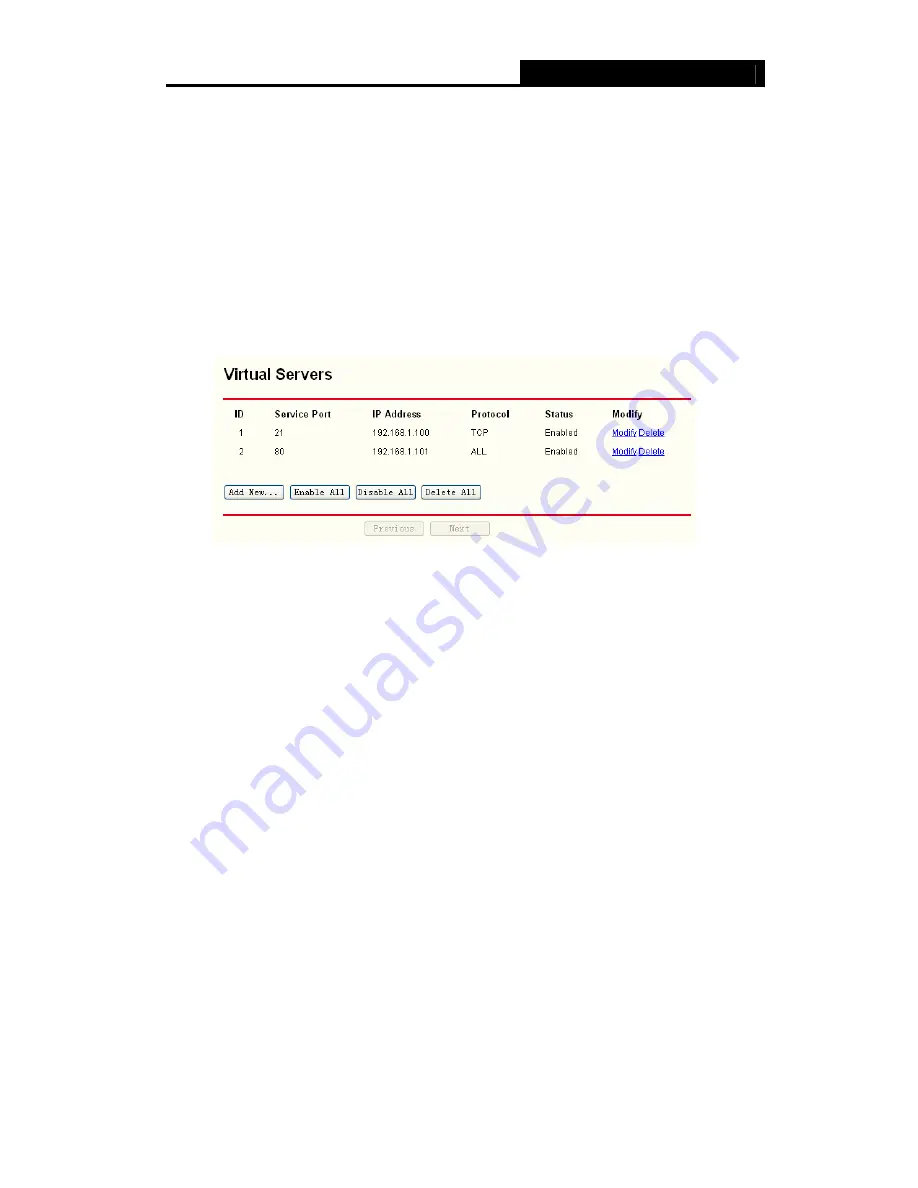
16NX071900001
Cable/DSL Router User Guide
28
Click any of them, and you will be able to configure the corresponding function. The
detailed explanations for each submenu are provided below.
4.5.1 Virtual Servers
Choose menu “
Forwarding
→
Virtual Servers
”, you can view and add virtual servers in
the next screen (shown in Figure 4-20).
Virtual servers can be used for setting up public services on your LAN, such as DNS,
Email and FTP. A virtual server is defined as a service port, and all requests from Internet
to this service port will be redirected to the computer specified by the server IP. Any PC
that was configured as a virtual server must have a static or a reserved IP address
because its IP address may change when using the DHCP function.
Figure 4-20
¾
Service Port
-
This field displays the numbers of External Ports. It can be a service
port or a range of service ports (the format is XXX - YYY, XXX is Start port, YYY is
End port).
¾
IP Address
-
This field displays the IP address of the PC running the service
application.
¾
Protocol
-
This field displays the protocol used for this application, either
TCP
,
UDP
, or
All
(all protocols supported by the router).
¾
Status
-
This field displays the status of the virtual server entry.
Enabled
means
that the entry will take effect,
Disabled
means that the entry will not take effect.
To add/modify a virtual server entry:
Step 1:
Click
Add New…
/
Modify
shown in Figure 4-17, you will see a new screen
shown in Figure 4-21.
Step 2:
Select the service you want from the “Common Service Port”, then the port and
protocol value will be added to the corresponding field automatically, you only
need to configure the IP address for the virtual server; If the “Common Service
Port” does not contain the service that you want, please configure the Service
Port, IP Address and Protocol manually.






























